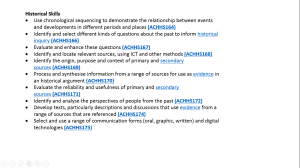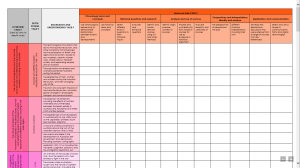Standard 5.1
Assess student learning
Standard 5.1 refers to the importance of providing students with a range of assessments (including diagnostic, formative and summative) while incorporating digital resources to facilitate these forms of assessments. Using a variety of assessment is to ensure that all students have an opportunity to succeed. For example, some students perform well with creative assessment pieces whilst others will excel in basic written assessments. With the use of technology, these two can be integrated to create the most effective learning experience for all the students in the class.
I have attended professional development training in ACARA and have designed a year 9 history depth study of WW1 based on the national curriculum. Here I was able to address the Australian Curriculum scope and scales for year 9 History in my unit of work, and translate these into meaningful interactive learning experiences for the students. I have demonstrated my ability in providing thorough preparation for formative activities through to summative tasks. The criteria for the assessment I designed were clearly outlined for the students and I developed assessment rubrics for students so that they knew what Australian Curriculum outcomes their work was being assessed against, with clear deadlines.
Summative assessments do not only take the form of tests and exams. In a WW1 depth study for example in year 9 history, the summative assessment task was a portfolio of work that included a choice between recording a podcast, designing a propaganda poster or constructing a ‘trench in a box’. This assessment approached assessment from a range of approaches, accounting for students different capabilities and skills.

